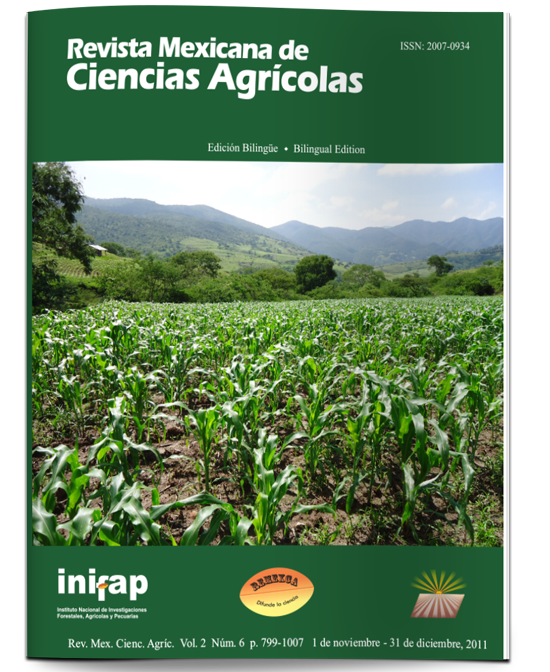DIFFERENCES BETWEEN CLASSICAL PLANT BREEDING OF MAIZE AND BREEDING THROUGH GENETIC ENGINEERING
DOI:
https://doi.org/10.29312/remexca.v2i6.1597Keywords:
imprecision of transgenic locus, natural mutation, qualitative and quantitative traits, transformationAbstract
This essay discusses two statements: a) there are no fundamental differences between classical genetic improvement (CGI) or breeding and genetic engineering improvement (GEI); the latter is an extension of the first but is more accurate so, it gives greater safety to the consumer; and b) transformation by genetic engineering is equivalent to a natural mutation. CGI and the GEI pursue objectives that can be complementary; but its foundations, methods and biological implications are different: the CGI works within the limits of sexual compatibility, using the species genetic diversity as a favorable source of DNA, which gives the precision and recombination mechanisms of sexual reproduction. The CGI uses foreign DNA integrated into a transgenic chimera, which is inserted imprecisely known in the chromosomal space of the transforming and generates a different locus in each independent transgenic event. Such dispersion can lead to an accumulation of transgenic chimeras in their progeny, and possible deleterious effects. By excluding the quantitative phenotypic characteristics as yield, GEI depends on the progress made by the CGI to develop superior phenotypes. It’s also concurred with the statement that, the transgenic insertion is a mutation with different implications for maize genome. The expression of each allele is regulated by the genome and epigenome to be activated or deactivated according to a development plan for growth of the genotype. In contrast, the transgene mutant is expressed somatically (in all plant cells, without pause).
Downloads
Downloads
Published
How to Cite
Issue
Section
License
The authors who publish in Revista Mexicana de Ciencias Agrícolas accept the following conditions:
In accordance with copyright laws, Revista Mexicana de Ciencias Agrícolas recognizes and respects the authors’ moral right and ownership of property rights which will be transferred to the journal for dissemination in open access. Invariably, all the authors have to sign a letter of transfer of property rights and of originality of the article to Instituto Nacional de Investigaciones Forestales, Agrícolas y Pecuarias (INIFAP) [National Institute of Forestry, Agricultural and Livestock Research]. The author(s) must pay a fee for the reception of articles before proceeding to editorial review.
All the texts published by Revista Mexicana de Ciencias Agrícolas —with no exception— are distributed under a Creative Commons License Attribution-NonCommercial 4.0 International (CC BY-NC 4.0), which allows third parties to use the publication as long as the work’s authorship and its first publication in this journal are mentioned.
The author(s) can enter into independent and additional contractual agreements for the nonexclusive distribution of the version of the article published in Revista Mexicana de Ciencias Agrícolas (for example include it into an institutional repository or publish it in a book) as long as it is clearly and explicitly indicated that the work was published for the first time in Revista Mexicana de Ciencias Agrícolas.
For all the above, the authors shall send the Letter-transfer of Property Rights for the first publication duly filled in and signed by the author(s). This form must be sent as a PDF file to: revista_atm@yahoo.com.mx; cienciasagricola@inifap.gob.mx; remexca2017@gmail.
This work is licensed under a Creative Commons Attribution-Noncommercial 4.0 International license.



